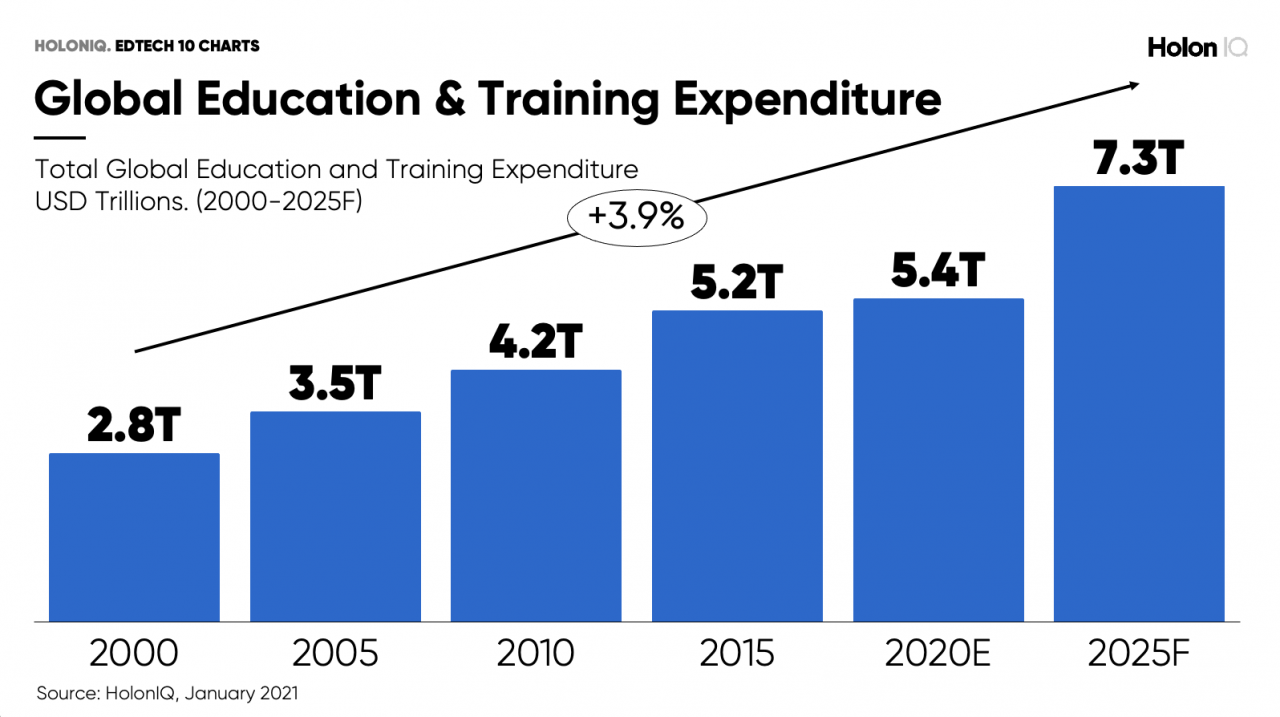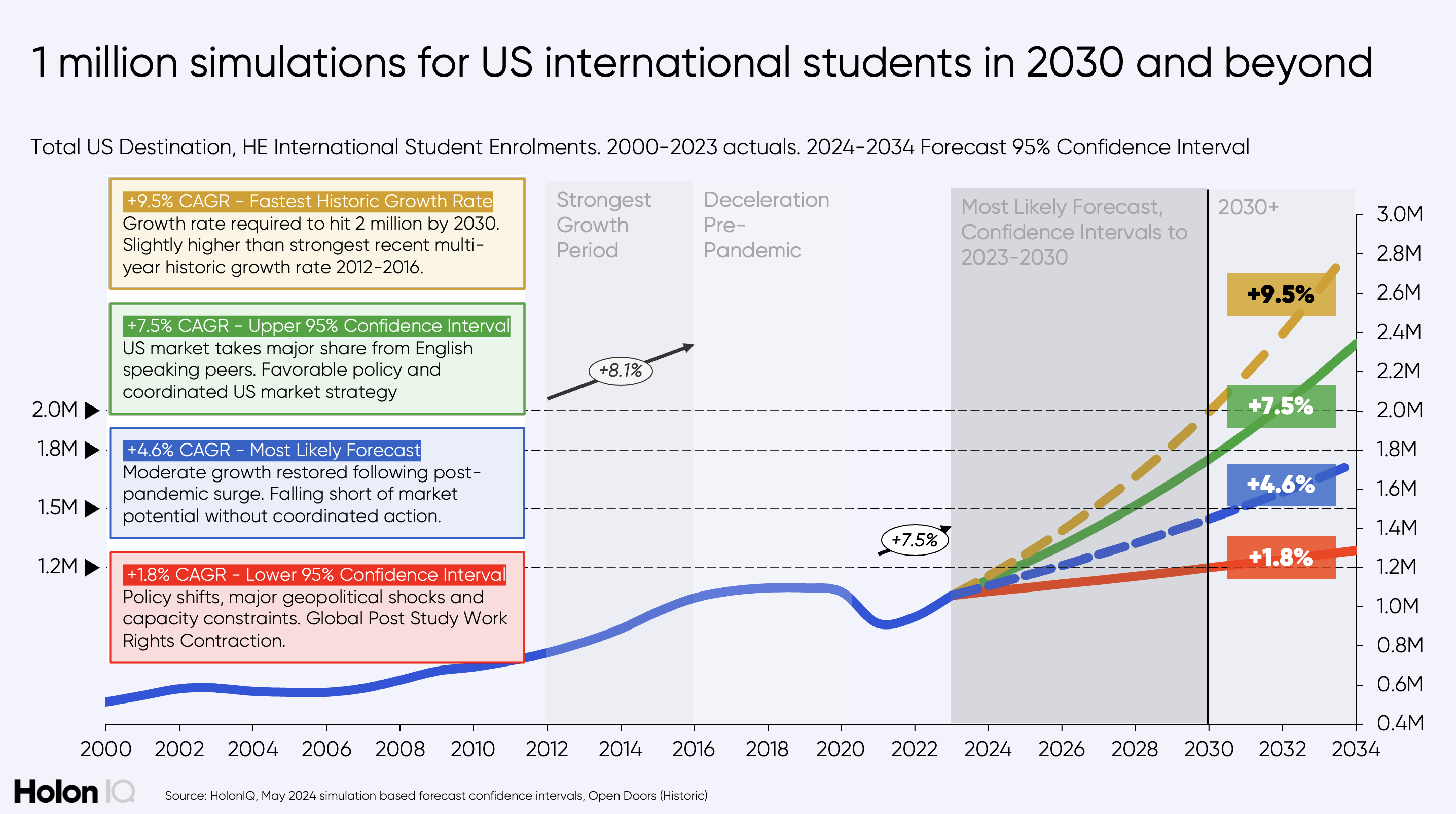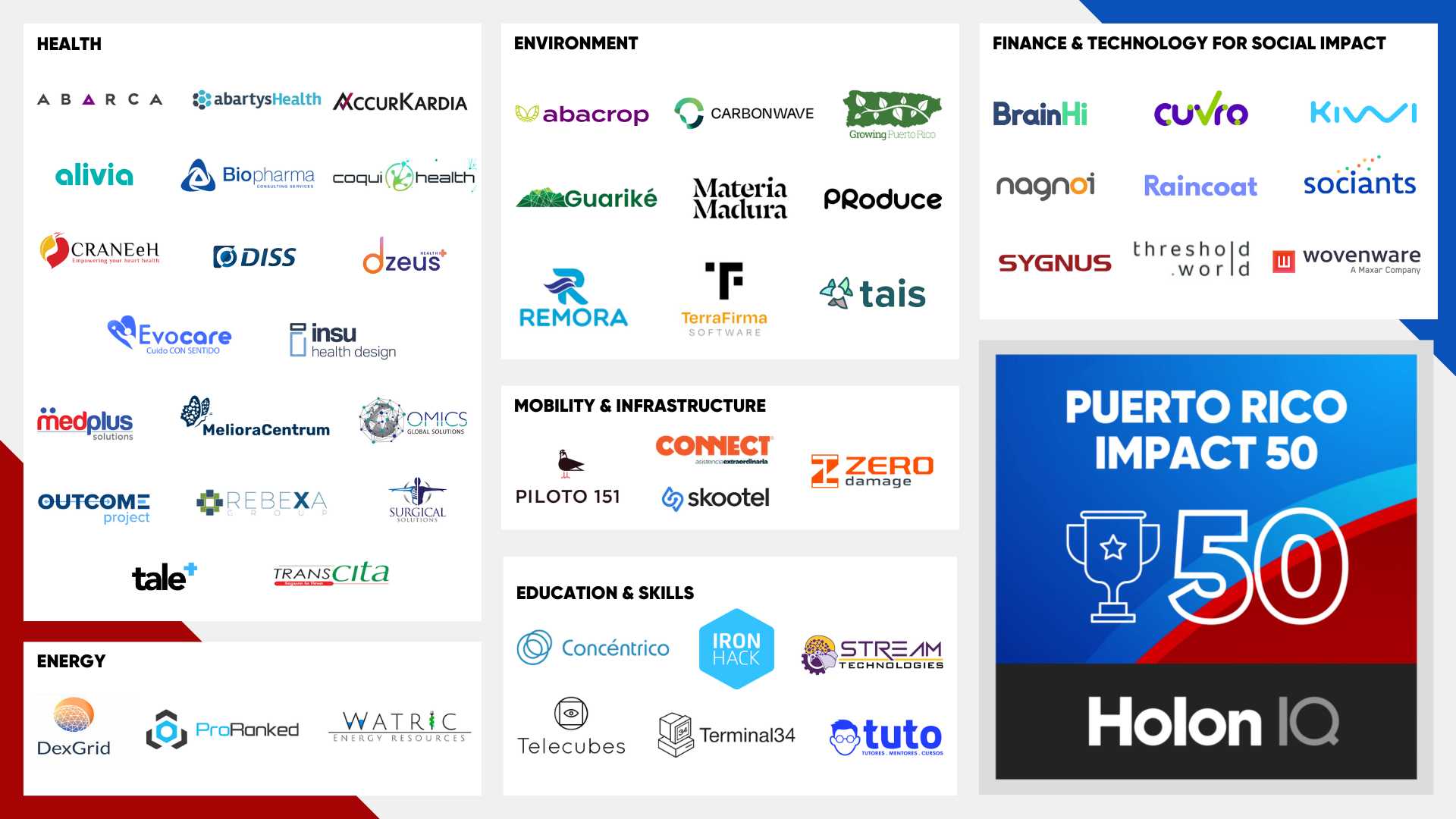

2. UpSkilling an additional 2 billion more learners between now and 2050
By 2050, there will be 2 billion more school, college, university and alternative post-secondary graduates in the world than today, driven primarily by greater participation and population growth. How will current models of education deliver access at the scale, quality and speed required?
3. However, education is starved of capital compared with other sectors.
Innovation requires capital. Governments are struggling to fund education at historic levels, meanwhile schools and institutions are cutting costs and embarking on digital transformation. Education is not drawing on enough private capital to fund the innovation that’s needed. Public-Private Partnerships will be critical to supporting future growth, innovation and access to education.

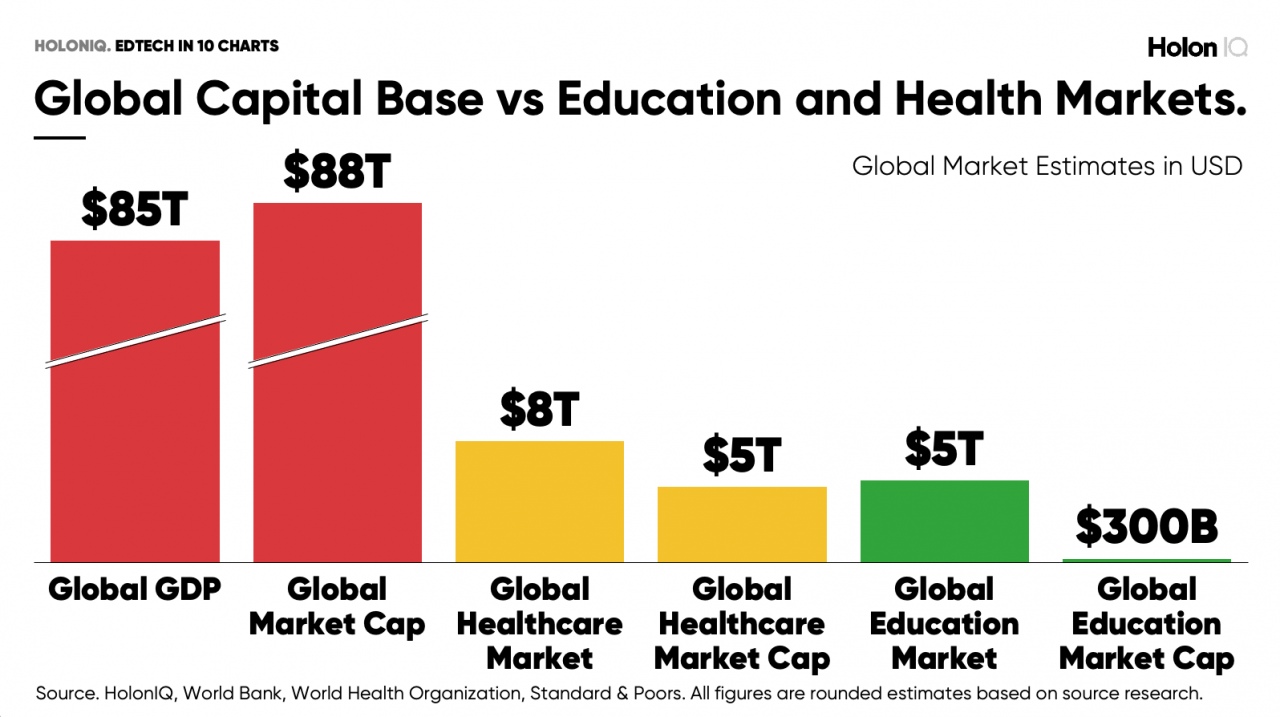


4. Education is grossly under digitized, with less than 4% of global expenditure on tech.
As a sector, education is a digital laggard with less than 4% of overall expenditure allocated to digital, presenting a serious challenge given the scale of what’s to come. The knowledge economy and future skills require massive digital transformation, and, while accelerated through COVID-19, there is still far to go.
Source: HolonIQ
5. Digital spend is changing fast, forecast to grow to $404B by 2025.
In 2020, education spent $227B on digital. While we forecast this to grow to $404B by 2025, it is still barely 5% of overall expenditure and considered by many as quite conservative. While the longer term impact of COVID-19 on education models is yet to play out, over the next few years we expect an upswing of spending on digital infrastructure in education and greater spending over the long term in new digital models.



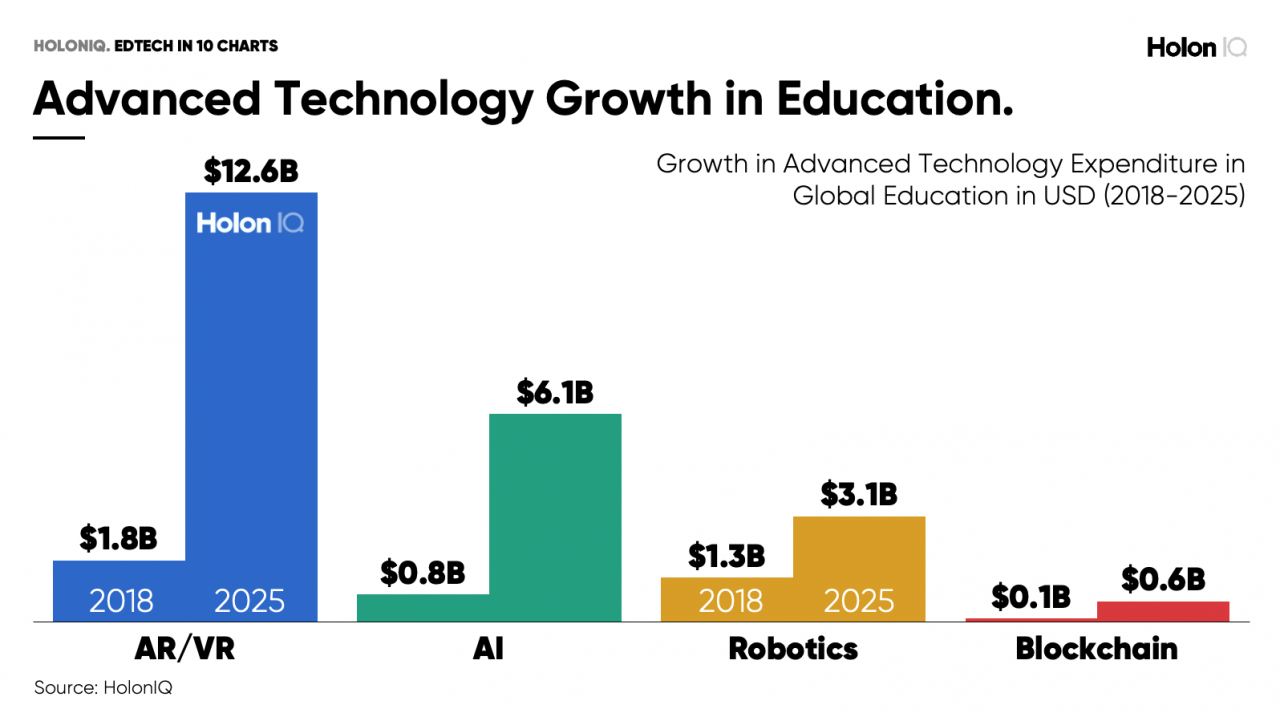
6. Advanced technologies will embed into education delivery and learning processes.
Applications of advanced technology in education and learning will hit their strides by 2025 with AR/VR and Artificial Intelligence becoming increasingly integrated into core education delivery and learning processes. While virtual and simulated training is already becoming mainstream in adult training and upskilling, we are also seeing greater usage of these technologies in formal education settings.
7. Venture Capital investment in EdTech is up 2x on 2018 at $16B in 2020.
Venture Capital investors can see the favourable dynamics of the global education and training market, investing $16B in 2020, up from $8.2B in 2018. This will continue to grow, but is not evenly spread across the globe and weighted heavily towards late-stage mega-rounds.

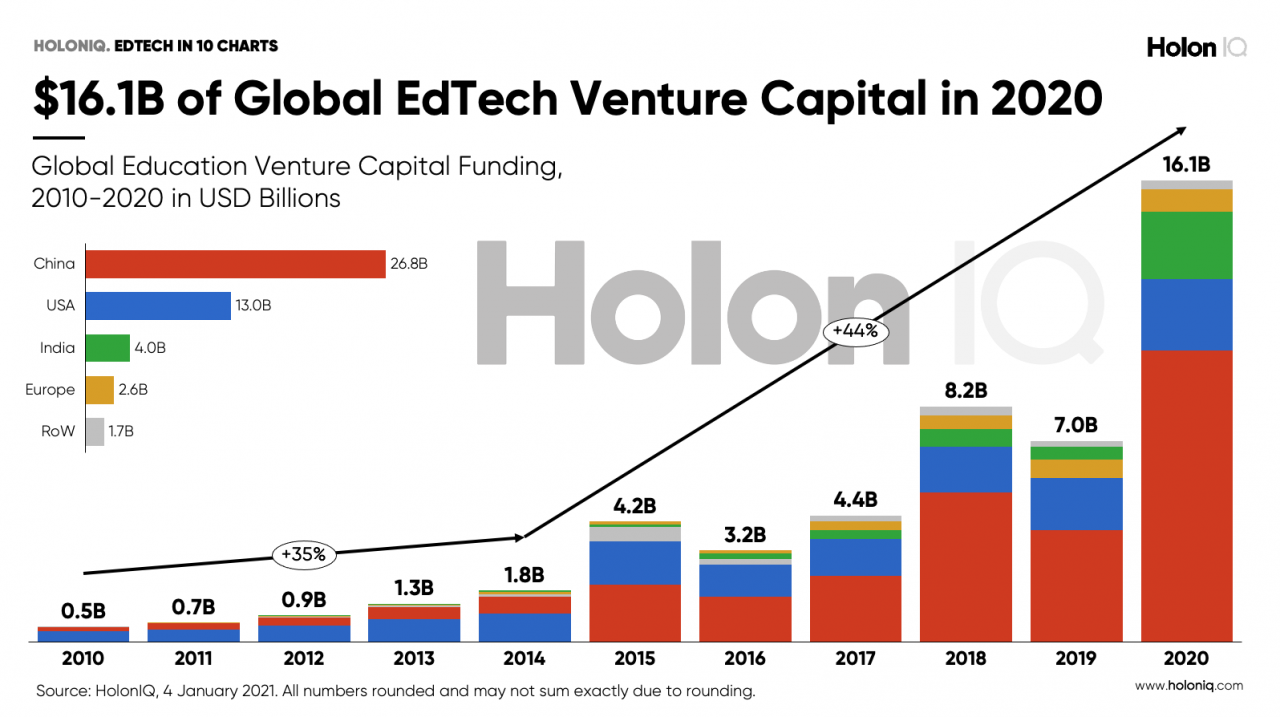


8. China is a key driver of growth in VC investment, making up 60%+ of all Global VC in 2020.
China, with the largest education market in the world, has led education VC investment growth over the past five years. China now makes up over 60% of all Global VC investment in education, the USA 15%, India, 14% and Europe 5% in 2020. While not as large, VC investment in Indian EdTech is worthy of note, growing almost 4x since 2018.Source: HolonIQ
9. VC investment drives IPOs. We expect 100+ education companies with Market Cap’s > $1B by 2025.
Venture Capital investment ultimately drives more exits in the form of public listings. In 2015 there were 10 listed education companies with Market Cap’s > $1B, growing to 30 in 2018 and we expect 100+ publicly listed education companies valued at over $1B by 2025.

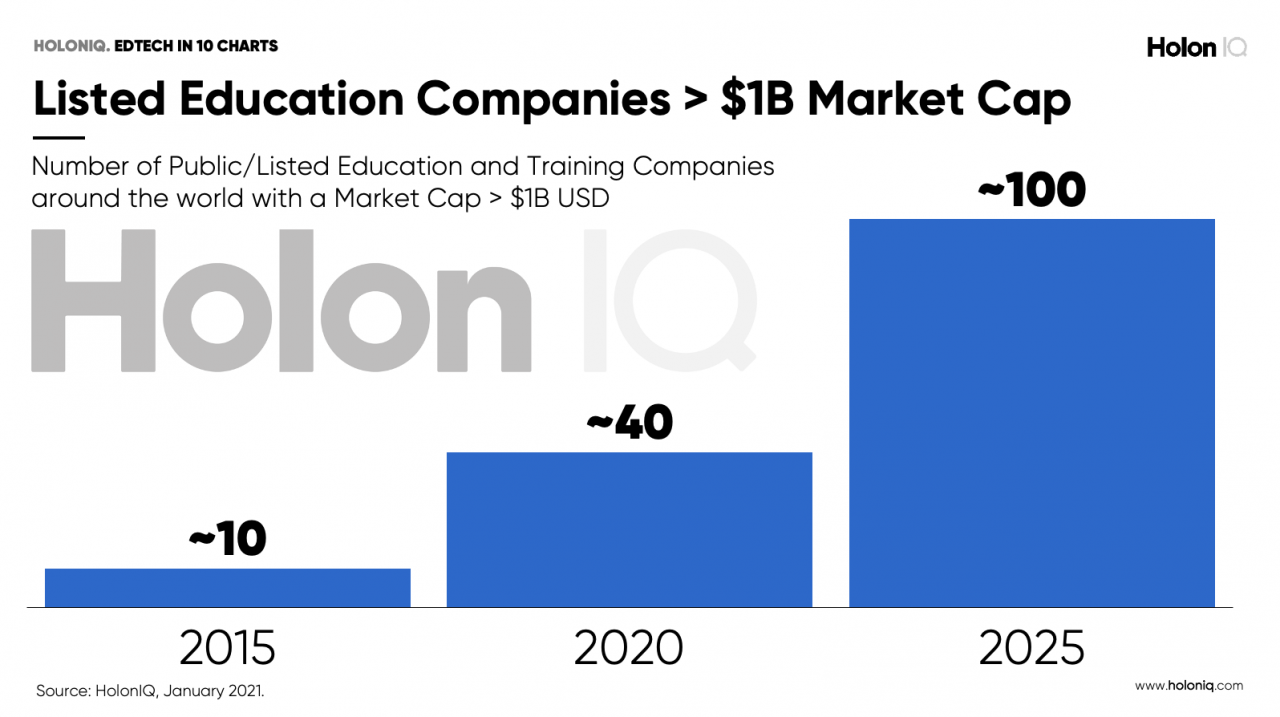


10. However, the devil is in the detail when it comes to education.
Education is a complex system. When it comes to understanding market dynamics and which technologies, business models and parts of the sector are likely to grow or shrink, it pays to understand the nuance. The Global Learning Landscape taxonomy, consisting of 50 clusters of innovation helps to unpack this complexity. HolonIQ maps and monitors each of these 50 market segments through our Global Market Intelligence Platform.
Latest Insights
Global Insights from HolonIQ’s Intelligence Unit.Powered by our Global Impact Intelligence Platform.
Sign up for our free weekly newsletters
Join 80,000+ free weekly newsletter subscribers.

